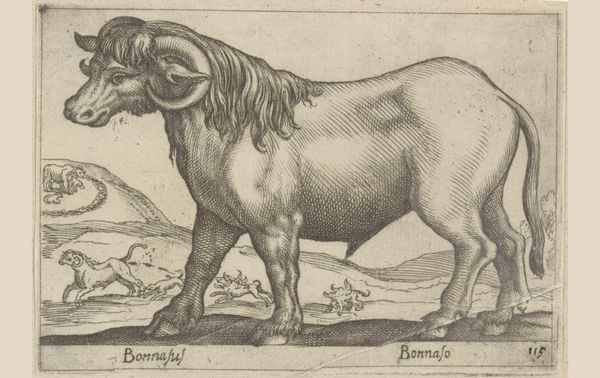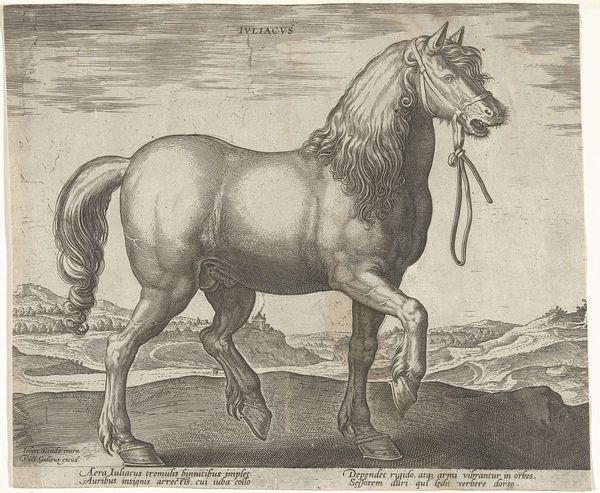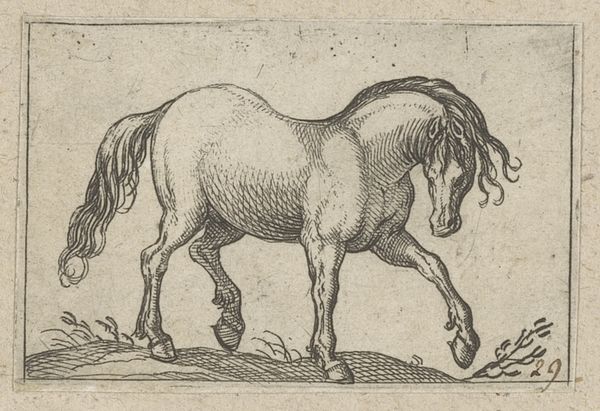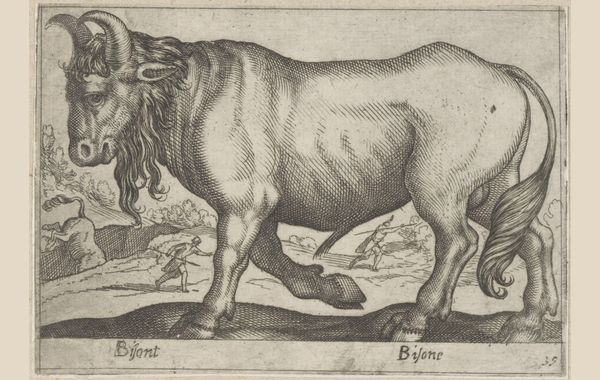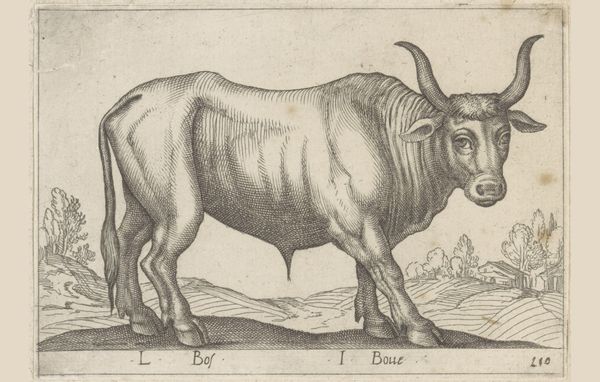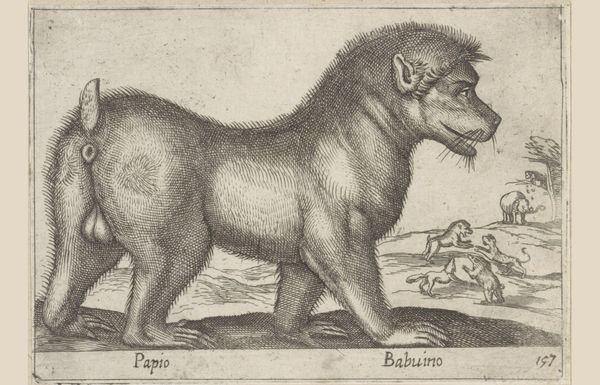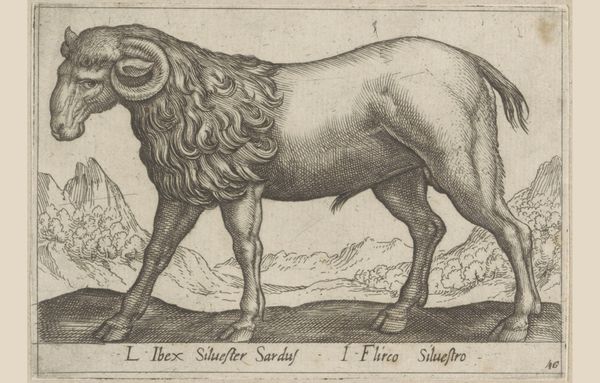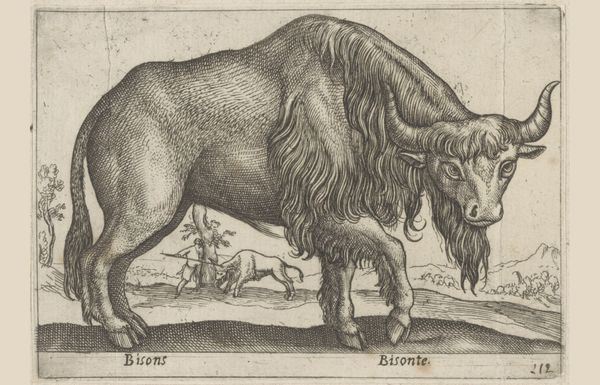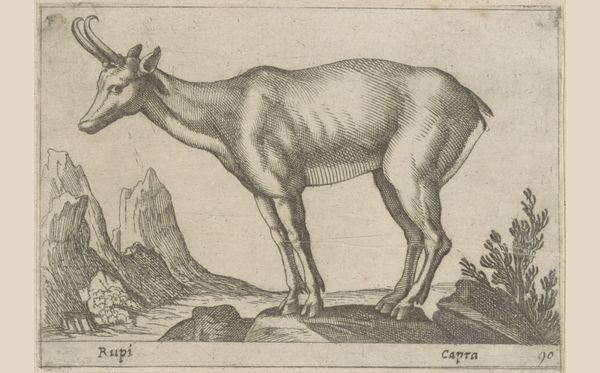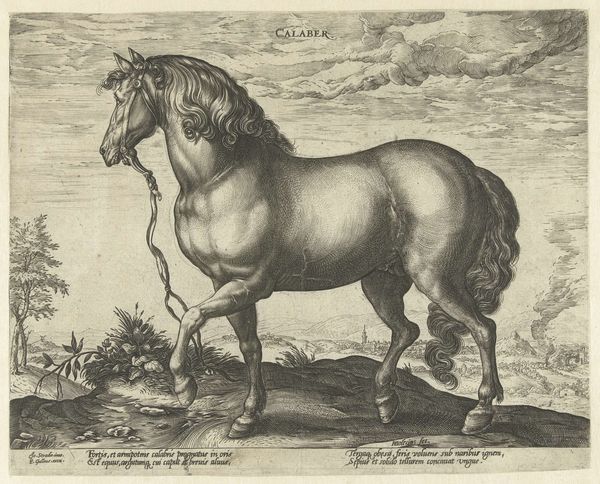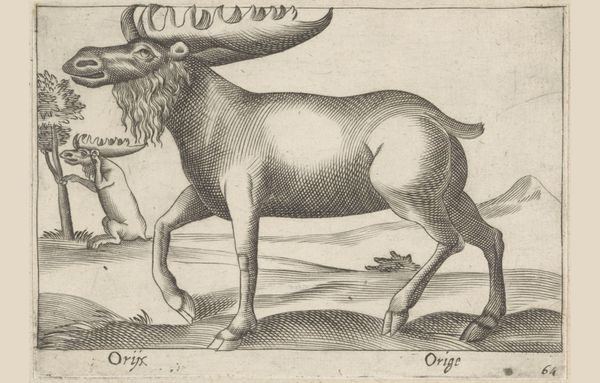
print, engraving
#
baroque
#
animal
# print
#
landscape
#
engraving
Dimensions: height 95 mm, width 137 mm
Copyright: Rijks Museum: Open Domain
Editor: Here we have Antonio Tempesta’s "Rund," a fascinating engraving dating back to before 1650. It depicts a large animal that looks like a cross between a bull and a camel. The landscape in the background has a slightly surreal quality to it. What strikes you most about this piece? Curator: What immediately grabs my attention is the function of such imagery within the context of the time. Prints like these circulated widely. They weren't necessarily about faithful representation, but about disseminating information - sometimes accurate, sometimes less so - about the wider world, reinforcing certain colonial power structures and hierarchies of knowledge. What does the "Rund", which is labeled "Bos Scythicus" (Scythian ox), tell 17th century Europeans about distant lands and people? Editor: So it's not really about accurate zoology, but about projecting ideas? The background, with people using similar creatures for labor, does make it seem like it's about how this animal relates to different cultures. Curator: Exactly. The "Rund" isn't just an animal, but a symbol of the exotic, perhaps even the "barbaric," framed within a European understanding. Note how the relatively "accurate" detail of the beast in the foreground contrasts with the sketchy depiction of the human activity behind. That sharp contrast is key. The print mediates between the known and the unknown. It shapes how Europeans perceive different regions through simplified, readily accessible visual tropes. Editor: It's interesting how a seemingly simple image can reveal so much about the complex dynamics between Europe and the rest of the world at that time. It’s about more than just aesthetics. Curator: Precisely. By examining the print through its socio-political lens, we gain invaluable insight into the construction and perpetuation of cultural perspectives through visual culture. Editor: I never would have thought about it that way. Now I understand why focusing on the history and the distribution is so crucial for these types of works!
Comments
No comments
Be the first to comment and join the conversation on the ultimate creative platform.

